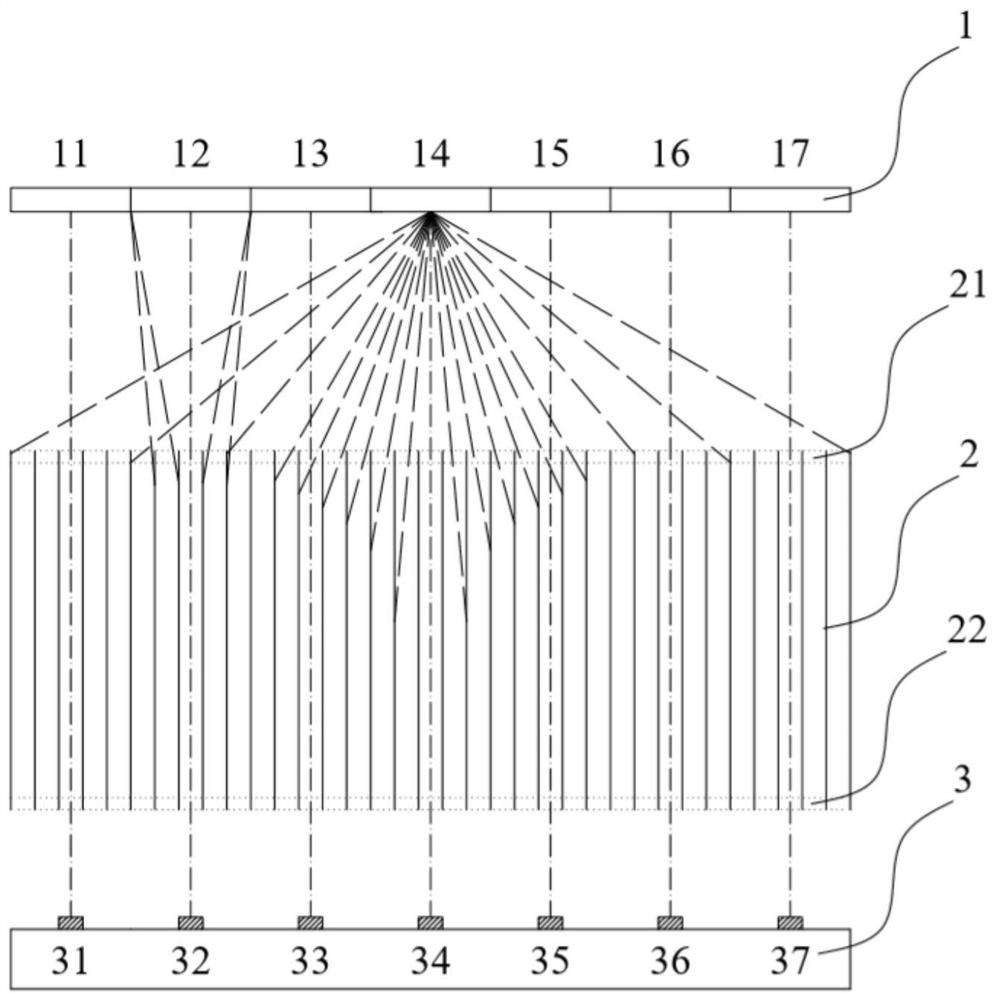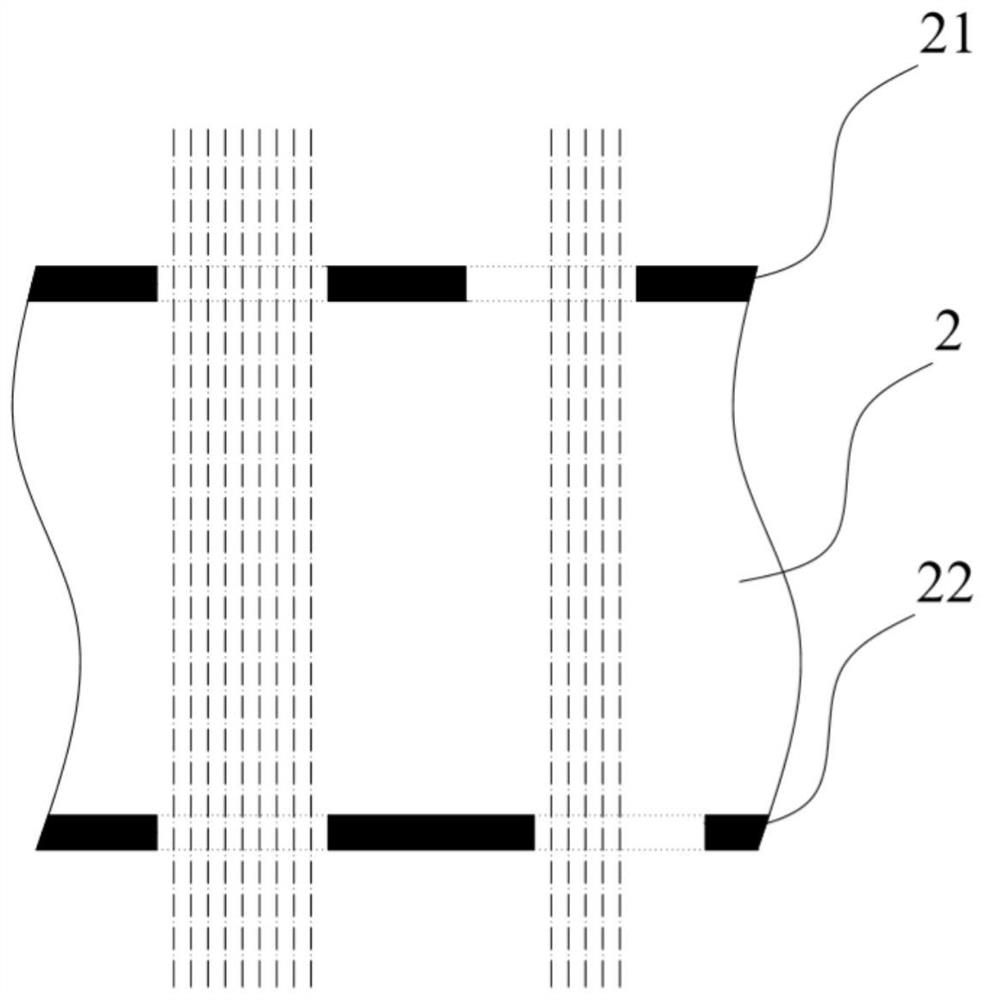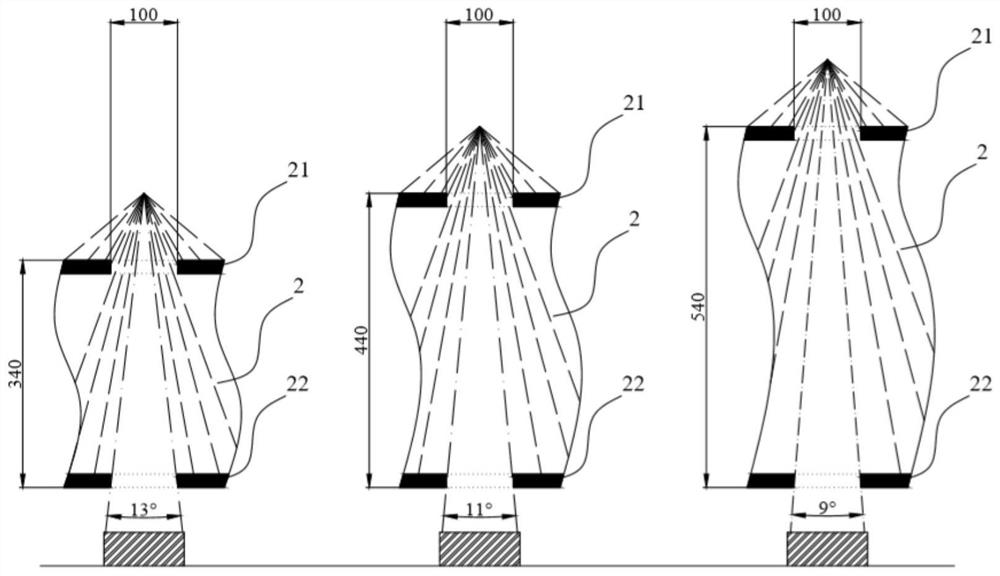Collimation film, interference-reducing collimation film, full-lamination collimation film and image recognition module
A fully laminating and laminating glue technology, applied in the field of image recognition, can solve the problem of difficult alignment of two layers of collimating diaphragms
- Summary
- Abstract
- Description
- Claims
- Application Information
AI Technical Summary
Problems solved by technology
Method used
Image
Examples
Embodiment 1
[0227] Such as Image 6 Shown is the collimating film provided by the present invention, including a collimating lens layer 41, a flexible substrate layer 42 and a collimating hole layer 43, the collimating lens layer is placed on the upper surface of the substrate, and the collimating hole layer is placed on the lower surface of the substrate , the collimating lens layer 41 includes a microlens array 41A and a thickness 41B, and the collimating hole layer 43 includes a light-shielding medium 43A and a collimating hole array (consisting of a certain number of collimating holes 43B) formed after hollowing out the medium; The thickness T of the flexible base layer is 25 μm. The collimating lens array and the collimating hole array of the collimating film are regular triangles closely arranged (such as Figure 8 shown). The minimum pitch P of the main optical axis of the microlens is 18 μm, the radius of curvature R is 12.6 μm, the thickness H of the collimating lens layer is 8...
Embodiment 2-24
[0236] For the collimating film provided in Example 1, the collimating lens array and the collimating hole array in the collimating film are closely arranged in regular triangles, the material of the collimating lens layer 41 is PMMA, and the flexible matrix layer 42 The material is PET, and the light-shielding medium 43A of the collimating hole layer 43 is titanium carbide with inorganic coating. The collimating film adopts the microlens punching method to drill collimating holes 43B. The other parameters are listed in Table 1.
[0237] Design parameters and optical properties of Table 1 Embodiment 1~24
[0238]
[0239]
[0240] Note 1: P is the minimum distance between the main optical axes of the microlens, in μm; R is the radius of curvature of the microlens, in μm; H is the thickness of the collimating lens layer, in μm; n1 is the refractive index of the collimating lens layer, infinite T is the thickness of the flexible base layer, in μm; n2 is the refractive inde...
Embodiment 25-30
[0243]For the collimating film provided in Example 1, the collimating lens array and the collimating hole array in the collimating film are closely arranged in regular triangles, the material of the collimating lens layer 41 is PMMA, and the material of the flexible base layer 42 is It is PET, and the light-shielding medium 43A of the collimating hole layer 43 is titanium carbide with inorganic coating. The collimating film adopts the microlens punching method to punch the collimating hole 43B. The other parameters are listed in Table 2.
[0244] Design parameters and optical properties of table 2 embodiment 25~30
[0245]
[0246] Note 1 is the same as Table 1.
[0247] As shown in Table 2, it is Examples 25-30 with different flexible substrate thicknesses. Examples 25-27 are respectively P=10 μm, and other parameters are constant, and a group of collimating films of T=10, 15, and 20 μm. Embodiments 28-30 are respectively P=25 μm, and other parameters are constant. Below...
PUM
| Property | Measurement | Unit |
|---|---|---|
| Radius r | aaaaa | aaaaa |
| Height | aaaaa | aaaaa |
| Thickness | aaaaa | aaaaa |
Abstract
Description
Claims
Application Information
 Login to View More
Login to View More - R&D
- Intellectual Property
- Life Sciences
- Materials
- Tech Scout
- Unparalleled Data Quality
- Higher Quality Content
- 60% Fewer Hallucinations
Browse by: Latest US Patents, China's latest patents, Technical Efficacy Thesaurus, Application Domain, Technology Topic, Popular Technical Reports.
© 2025 PatSnap. All rights reserved.Legal|Privacy policy|Modern Slavery Act Transparency Statement|Sitemap|About US| Contact US: help@patsnap.com



